
The Drosera Seeds - Making Tiny Plants
Last post you saw the flowers
The entire sequence of blooms have closed and are starting to dry out now.
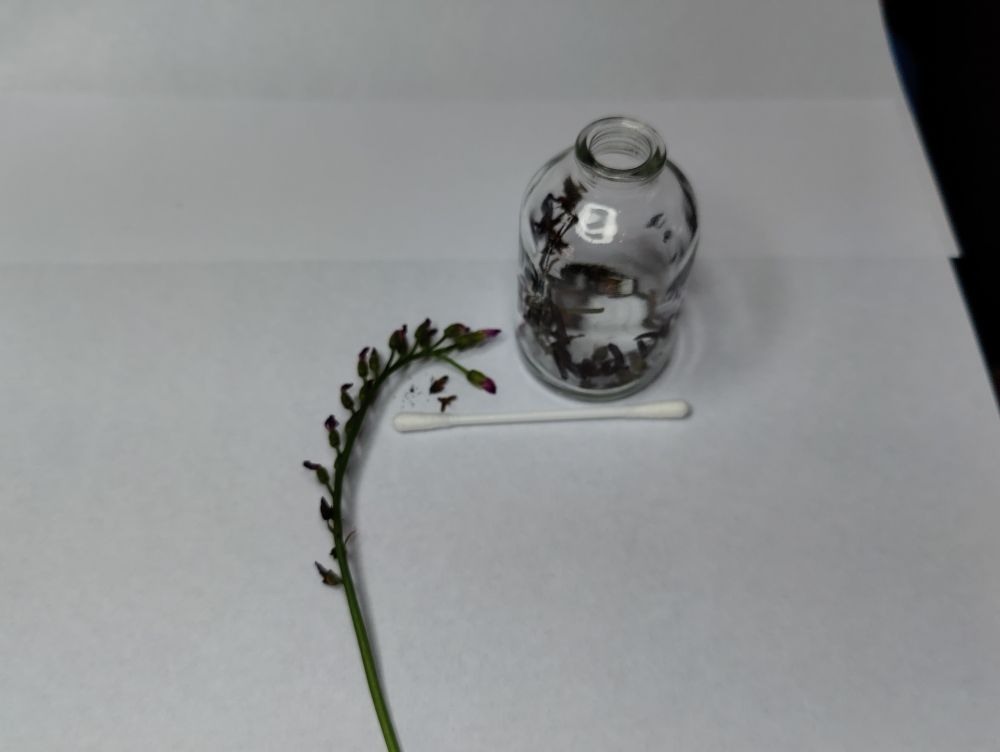
Here we have the stalk with the flowers that you saw last post. There is also a jar where I normally store the dried flowers. I also placed a couple dried flowers on the paper and a Q-tip for context (size).
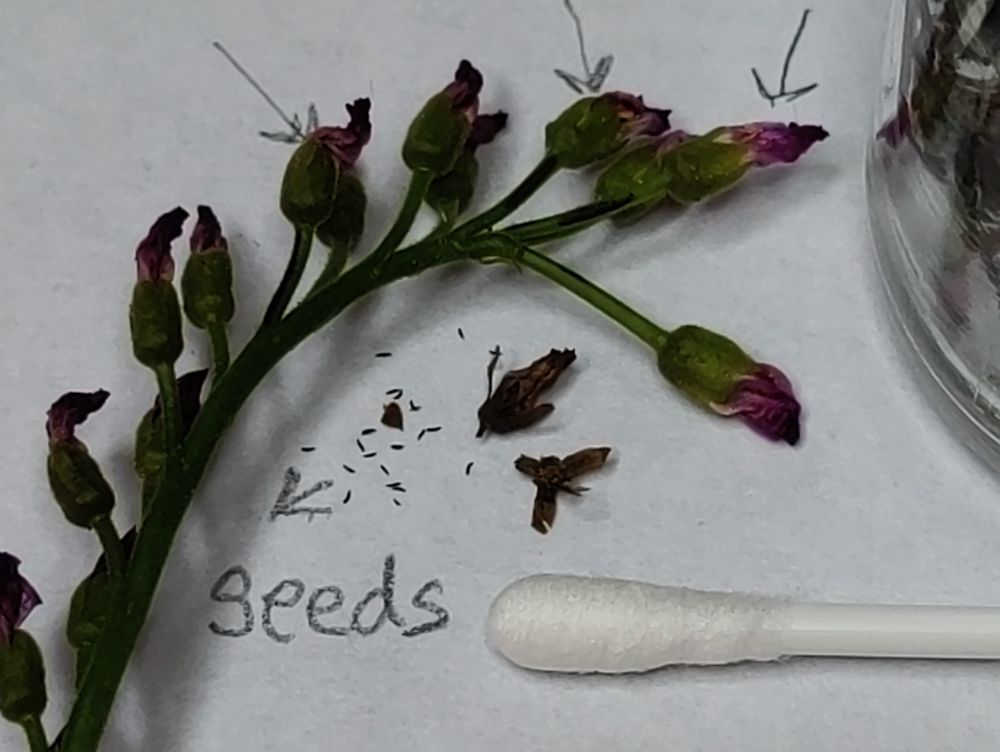
Above, we see the three buds that I had pollinated manually, which are marked with a black permanent marker along the stem of each. It is likely that all of the flowers were visited by some sort of insect and for that reason, I save them all. The flowers only stay open for a few hours normally. So for best results, I mark the ones that I did manually and keep them separate. The seeds continue to develop inside the flowers until the entire stem is dry.
Here is a closer look still.
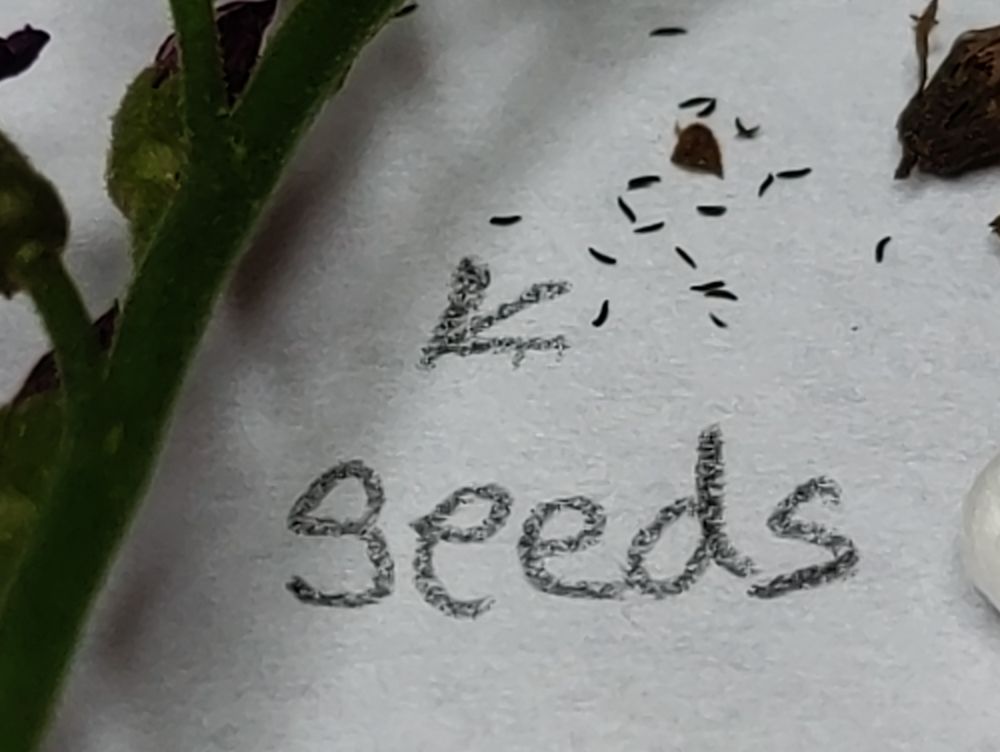
To prepare for spring time, I need to get the plants going mid winter in order to have some to put up for sale in the stores. These seeds stick to your finger tip pretty well. One touch and I can seen an entire pot - only half will grow and they require attention twice per day - a spritz of distilled water and an hour or so of filtered sunlight.
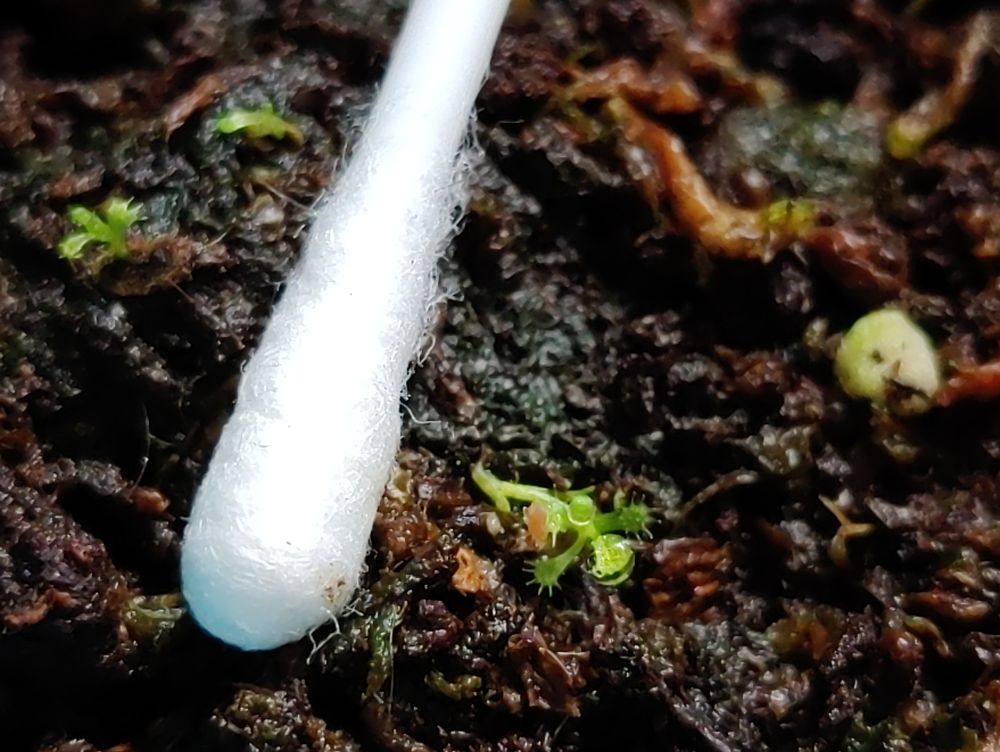
These (above) were started from seeds three months ago in the dead of winter. They will be ready to be fed as soon as they have droplets on the tiny hairs of their leaves. Not quite ready, besides, the smallest bugs I have would be larger than the entire carnivorous pad of their leaves.
Offshoots
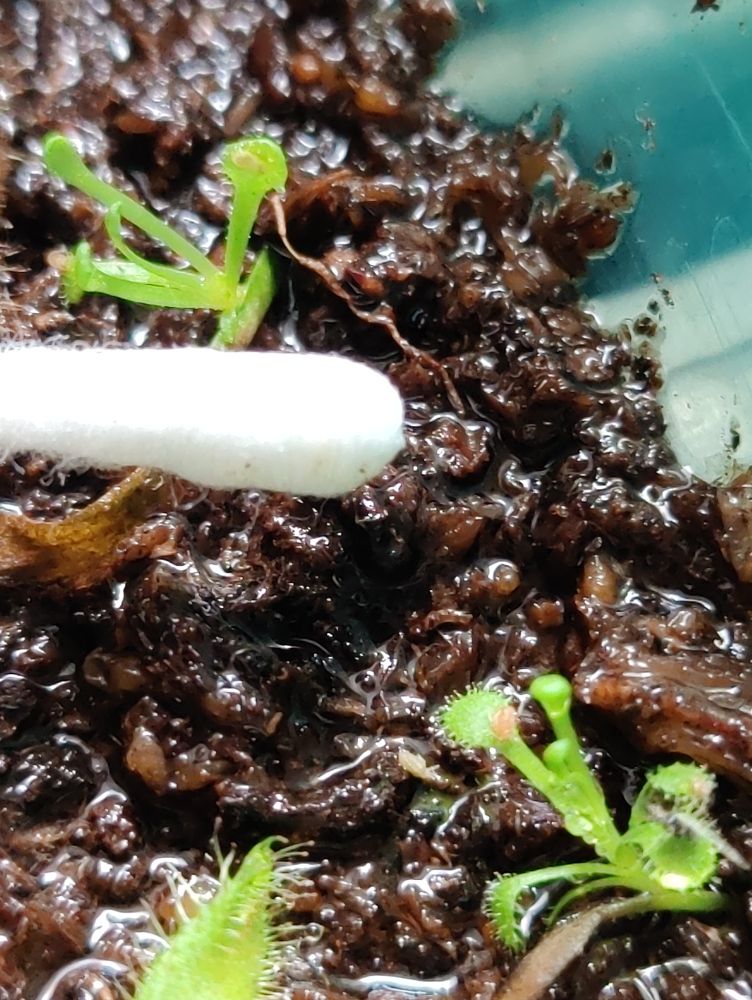
I found these babies growing from one of the active leaves of a wintering plant outside. I clipped off the parent leaf and put it in moist moss about a week ago. The little light-brown spec on the leaf of the plant (lower left) is an aphid. I saw some aphids one of the leaves of my radish plant, snipped off the leaf and froze it. Good for plucking and feeding these babies for a while.
I could raise these plants outside and I do that when the nights are 75 degrees or more. My winter head start has them staying inside and there are not bugs to feed on when they are inside, except for the off chance that a fly gets in the house. Only the big plants are capable of holding down a full grown fly though.
When they are bigger, they will catch their own meals.
The bugs usually land and get stuck. Struggling makes the sticky enzyme on the leaves become even more sticky. The bugs eat some of it and go to sleep or calm down. Then they are digested over a week long process and the plant moves it's tenticles around to touch the insect's body and digest it. The bug later falls to the ground to make room for new bugs.










Comments